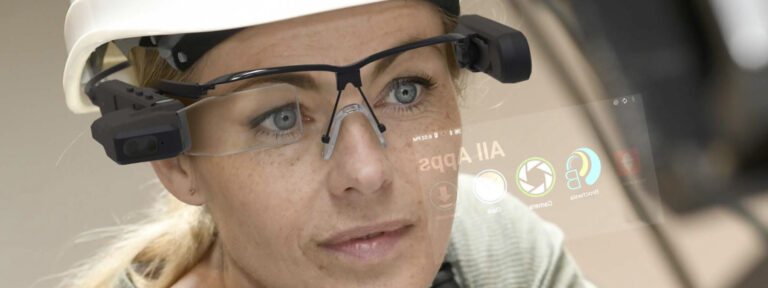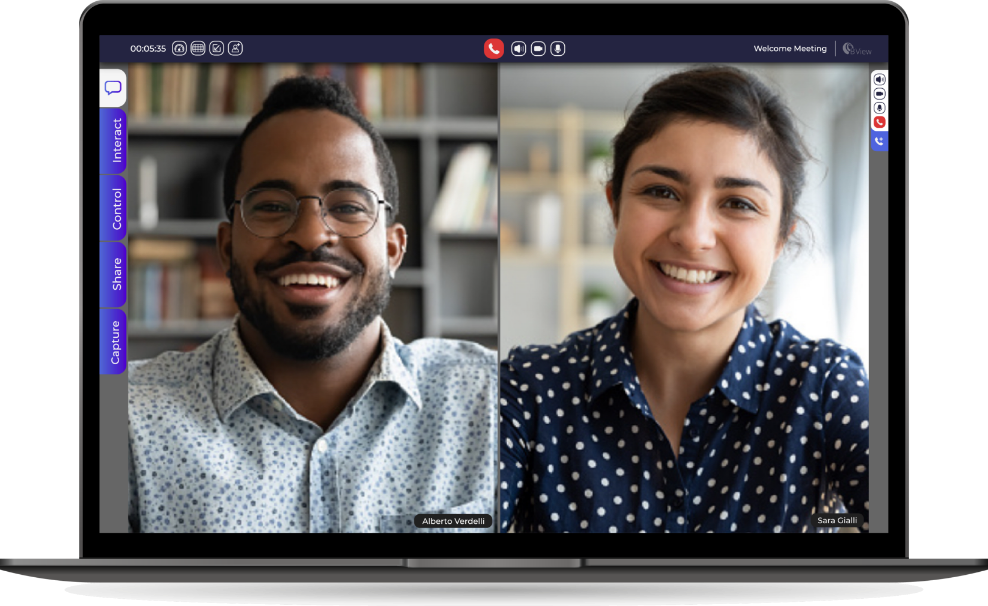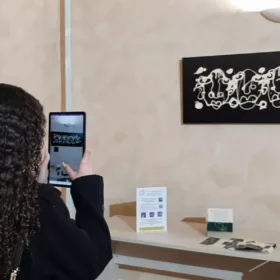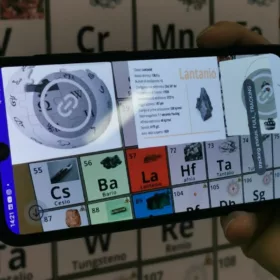Smart Glasses are wearable devices designed to provide an enriched visual experience, enabling users to view Augmented Reality information directly in their field of view. This means that while viewing the real world, users can access a universe of digital data, such as images, videos or documents, without having to shift their attention to a separate screen.
Common Features of Smart Glasses
- Integrated Display: Smart Glasses offer users the ability to receive information directly through the lenses of their glasses, overlaying digital data with the real world;
- Connectivity: These devices can connect to tablets, smartphones or PCs, enabling users to communicate and share their views with people located in a physically distant place;
- Camera and Sensors: Most Smart Glasses have built-in cameras that allow users to take photos, shoot videos and atre advanced features;
- Voice Control: Users can interact with Smart Glasses using voice commands, reducing the need to physically interact with the device;
- Integrated Audio: Some models include speakers or earbuds that allow users to hear sounds or audio communications from the devices with which they are connected;
Smart Glasses, combined with augmented reality can be used in many areas
Industry: In industrial sectors, Smart Glasses, thanks to augmented reality solutions, are revolutionizing efficiency and productivity.
They enable operators to view information and workflows directly in their field of vision, ensuring that tasks are performed as accurately as possible. In addition, the ability to communicate in real time and remotely with colleagues allows them to solve problems and make decisions faster.
Energy: Operators can use the glasses to access real-time instructions during inspections, maintenance operations, audits and repairs of energy facilities. It also provides the ability for industry professionals to remotely guide colleagues step-by-step through complex procedures.
Maritime: Technicians and engineers can use Smart Glasses in this sector to gain access to diagrams, manuals and explanatory videos during maintenance and repair operations.
These devices allow them to be able to work hands-free, improving efficiency and accuracy and enabling remote peer support.
Telecommunications: Smart Glasses are very useful for guiding interventions in hard-to-reach or unsafe areas.
In fact, the remote technician can guide the operator in the field and send him directions, workflows, graphics, images and videos, taking advantage of Augmented Reality.
Health Care and Medicine: During medical procedures, Smart Glasses give doctors the ability to access information without having to take their eyes off the patient or the operating room. They also provide the opportunity for specialists to be able to engage with colleagues located anywhere in the world.
Education: Smart Glasses and augmented reality can be used to create immersive, engaging learning experiences that help students acquire information and perform procedures safely through teacher guidance.
This approach offers active, hands-on engagement, encouraging pupils to explore and experience learning concepts in tangible ways, promoting deeper understanding, and offering multiple possibilities.
Tourism and the arts: With the help of wearable devices, visitors can access detailed information and real-time images while exploring a museum, historical site, or city.
This mode of guidance, in addition to offering a deeper and more engaging understanding of the place visited, allows visual works to be appreciated from a distance, opening up new perspectives for cultural and artistic accessibility.
Main Benefits of Smart Glasses
Smart Glasses offer a number of advantages that make them revolutionary tools in various sectors.
- They enable users to access information directly in their field of vision without having to use their hands, leaving them free for other activities;
- They improve and increase work efficiency by reducing execution time;
- They enable real-time communication between operators or professionals in physically distant locations, providing immediate advice and support through video or audio;
- They are ideal tools for training because they allow professionals, as well as students, to learn through observation and/or guided practice;
- They increase safety at work and help prevent accidents;
- They can be an aid for people with disabilities who have difficulty moving from home;
- They help the environment because they reduce travel;
- Enhance customer experiences in showrooms or art venues.
In addition to improving operational efficiency, these solutions open the door to new perspectives on collaboration and learning, and enable professionals to share knowledge and expertise in real time, regardless of their geographical location, thus contributing to greater business growth and innovation.
The solutions devised by Brochesia, are created with the aim of leveraging the benefits of Smart Glasses in so many fields of application, enabling companies to increase productivity, efficiency and safety.
Contact us for a consultation and free trial!





